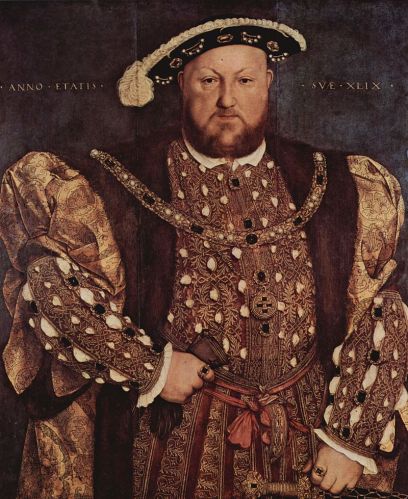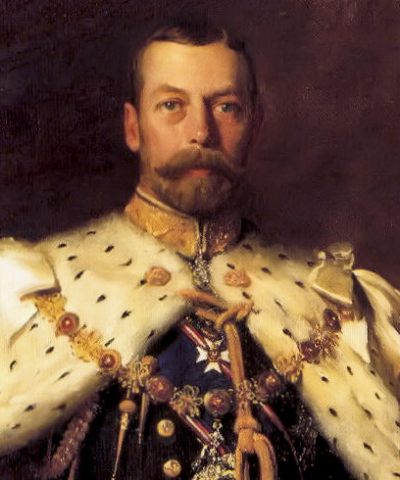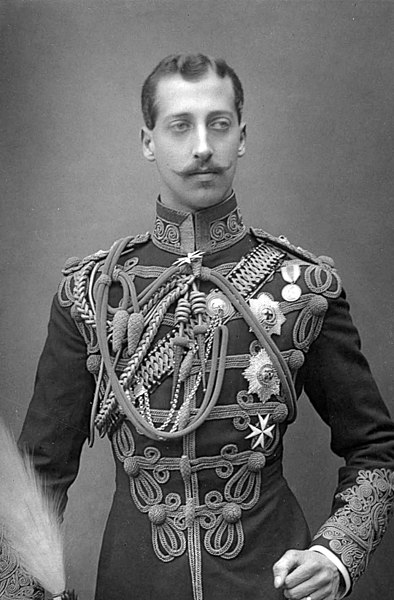Kings Henry VIII, Charles I and George V ruled over England and Wales, and later Scotland and Ireland, during times of momentous change for the country. But they were all second sons and not trained for kingship from birth. Their elder brothers had predeceased their fathers, Kings Henry VII, James I and VI and Edward VII, meaning they replaced their brothers in the royal line of succession.
Henry became heir apparent when his elder brother Arthur died in 1502. He instigated the break with Rome resulting in England’s conversion from Catholicism to Protestantism and the dissolution of the monasteries when he was head of the Church of England. He married Arthur’s widow, only to insist years later that his marriage was invalid when he wanted to marry Anne Boleyn and produce the longed for male heirs with a younger wife.

Charles became heir apparent when his brother Henry died in 1612 and reigned during the civil war culminating in his death, the only King of England to be beheaded. On 20 January 1649 he was tried for high treason and according to the indictment he was a ‘tyrant, traitor, murderer and a public and implacable enemy of the commonwealth of England’. He was executed on 30 January 1649.

George took his brother’s place in the line of succession when Albert died in 1892. He also married his brother’s fiancée. He reigned during during World War One and the turmoil in Ireland before the 1922 Easter uprising. It was during the war that he changed the royal name from the German Saxe-Coburg-Gotha to Windsor to allay anti-German sentiment against the royal family.

ARTHUR (1486 – 1502)
King Henry VII’s eldest son Arthur was born prematurely in September 1486. His mother was Elizabeth of York and his parents’ marriage united the warring Lancaster and York dynasties. He was made Prince of Wales and Earl of Chester at the age of three and Knight of the Garter at age five. He was educated in Latin classics, modern languages and riding, hunting and warfare skills, all in preparation for his destiny as king of England.
Arthur was betrothed to Katherine of Aragon, the daughter of Ferdinand II of Aragon and Isabella I of Castile, an alliance that would be beneficial for both countries for it weakened the anticipated power of France. It would also strengthen the fledgling Tudor dynasty when the union produced much needed heirs. They married on 14 November 1501 in the old St. Paul’s Cathedral, London.

After the marriage, Arthur and Katherine set up court at Ludlow castle. Unfortunately the marriage was to be short-lived. Both Arthur and Katherine became ill in March 1502 and Arthur died on 5 April. His cause of death has not been determined, among theories posited are the sweating sickness (which was ‘flu-like and was rife in the area at the time) and consumption, although there is little evidence of Arthur being a sickly child.
HENRY (1594 – 1612)
The title of one of my blog posts Remember, Remember the Sixth of November: Commemorating Princess Charlotte 200 Years After her Death, was a reference to the rhyme memorialising the gunpowder plot, remember, remember the fifth of November, gunpowder, treason and plot. I simply changed the word fifth to sixth because it suited my needs.
Researching my latest royal post, I became aware that Henry Frederick, Prince of Wales, died of typhoid fever aged eighteen, on the 6 November 1612, 195 years before Charlotte, another heir to the British throne. Indeed, this title might have been better suited to Henry, rather than Charlotte, for it was his father, and his father’s Parliament, who were targeted by the treasonous plotters, including the infamous Guy Fawkes, that if successful would have wiped out the royal family and the entire government.

Henry Frederick, born in Stirling Castle, Scotland, was good looking, brave, athletic, intelligent, an avid art collector and most of all, popular. He was created Prince of Wales and Earl of Chester in 1610. When he died people openly cried on the streets of London. His father, too, cried openly at the loss of his heir. His younger son, Charles, was a weak child who learned to walk late (like his father) and needed to wear reinforced iron boots to correct a disability. Henry’s death was a cataclysmic event and led to concerns that the Stuart male line would die out causing a succession crisis. However, Charles stood up to the challenge and proceeded to shrug off his disability and improve his physical fitness during his teenage years.
ALBERT (1864 – 1892)
Albert Victor Christian Edward was born prematurely on 8 January 1864, although small, he was healthy. His parents were Albert and Alexandra, Prince and Princess of Wales. His grandmother, Queen Victoria, named him after her late husband and herself. The parents named him Christian after Alexandra’s father and Edward as it was one of his father’s names. He was always known as Eddy to family and Prince Eddy to the public.
He was a poor student, deemed lazy by his tutor, who insisted his brother George accompany his lessons to encourage him to study. As a teenager he joined the Royal Navy’s training ship, HMS Britannia, alongside George. They stayed aboard two years before switching to HMS Bacchante for a three year world tour. The brothers were eventually separated when Eddy went to Cambridge University in 1883. Still apathetic to intellectual pursuits, he barely attended lectures, was excused from examinations and was looked on disdainfully by his tutor John Kenneth Stephens. Nevertheless, he left with an honorary degree.

Eddy’s adult life has been the subject of much conjecture. He was posthumously accused of being or knowing, Jack the Ripper, during the twentieth century, regardless of evidence proving beyond doubt that he was not in London at the time of the murders. He was also suspected of some involvement in the Cleveland Street Scandal when a homosexual brothel was discovered in 1889, which has led to allegations of an establishment cover-up as he was shipped off for a hurriedly arranged tour of India in the aftermath.
Prince Albert Victor, Duke of Clarence and Avondale, Eddy, proposed to Princess May of Teck on 3 December 1891. The wedding was planned for 27 February 1892, but it was not to be. He fell ill with influenza on his birthday and died of pneumonia on 14 January 1892 at Sandringham, handing his second-in-line to the throne status to his brother. Not only did George become Prince of Wales, he also got the girl. Just like Henry VIII 400 years earlier, George, Prince of Wales, was married to Princess May on 6 July 1893, his brother’s intended. George and May reigned as George V and Queen Mary, grandparents of Queen Elizabeth II.
Sources
David Starkey, Monarchy
http://tudortimes.co.uk/people/arthur-prince-of-wales
http://www.tudorplace.com.ar/Bios/ArthurTudor.htm
https://www.tudorsociety.com/arthur-tudor-sarah-bryson/
http://www.englishmonarchs.co.uk/saxe_coburg_gotha_3.html
http://www.telegraph.co.uk/news/uknews/theroyalfamily/10220537/Forbidden-love-of-a-star-crossed-prince.html


A great lesson in history. Great research. Thanks for sharing.
LikeLiked by 2 people
So glad you liked it 🙂
LikeLiked by 1 person
What’s the lesson? Don’t be an heir to a throne? Great, at least I accomplished something. Hahah
LikeLiked by 1 person
Not sure there is a lesson – it’s just a story I wanted to tell for a long time. Except I’ve tried to format it in the shortest word count possible, for me. . . anyway!
LikeLiked by 1 person
Oh, no, I was just trying to make a joke. That’s the conclusion I drew from reading it. 🙂
Yes, I know you are very passionate about your history. Good job on keeping it short…er.
LikeLiked by 1 person
Love learning about all the history!
LikeLiked by 1 person
🙂
LikeLike
Good informative article 🙂
LikeLiked by 1 person
Thanks 😁
LikeLike
Reblogged this on Reading… Past Times.
LikeLiked by 1 person
Thank you 😁
LikeLike